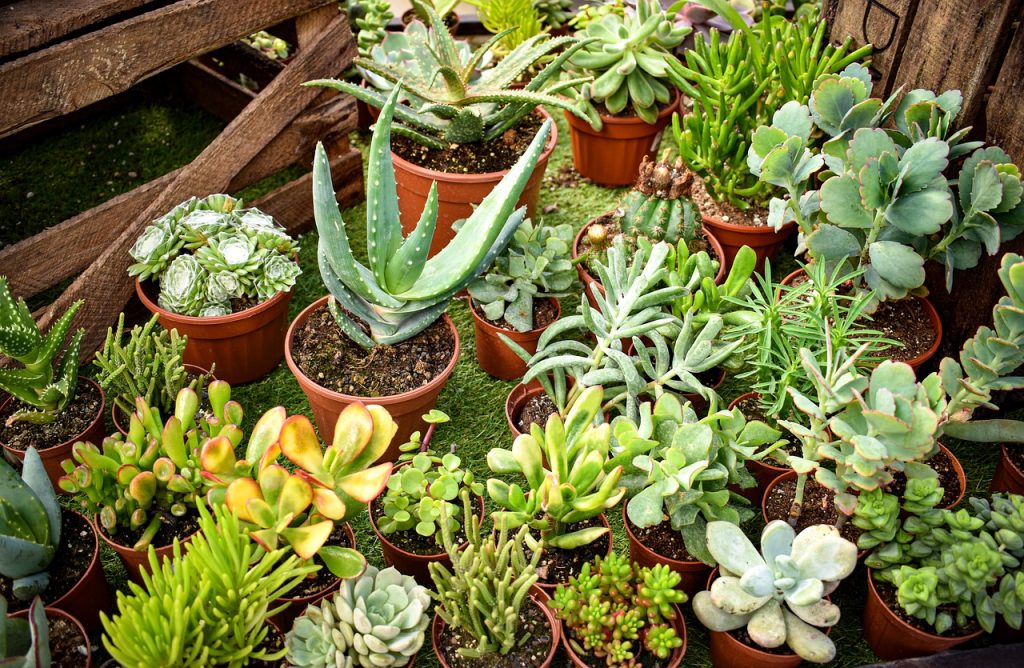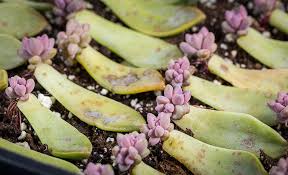
Succulents, the fluffy, hardy and aesthetically pleasing plants with coloured juicy leaves are the “desert dwellers” that are only recently getting all the hype that they deserve. Tons of different species come under this classification namely cactus, kalanchoe, jade plant, snake plant, sedum and many more. These can be aptly termed as the munchkin of the plant kingdom which are all rage now and visible in every interior decor for homes and offices. The basic tag that goes around with them is that of “indoor plants” and “low maintenance”. So we common folk attracted by their beauty and convinced by the tags bring these beauties home, pour our love and affection on it but still fail to maintain them in their utmost glory. The major mistake that we make is interpreting “low maintenance” as the ability of the plant to grow and thrive in any condition available, which is far from true. Hence, the proclamation that succulents are easy to grow is, in fact, a mirage. But making some major mental adjustments can make result in a smooth endeavour. These adjustments are done by keeping in mind their natural habitat, deserts.
Desert ecosystem is characterised by the unrelenting sun, sporadic rainfall, porous soil and sharp variation in the day and night temperatures. This has made the succulents evolve into plants that can store water for a longer period of time in their leaves, have very shallow root system to absorb water from the surface soil, absorb moisture from the atmosphere and pigmentation of leaves to deal with stress conditions. The question that arises in our mind after reading this is, “do we have to replicate desert conditions for their survival?” and the answer is no. The above facts just help to prove how different these are from other plants and that we have to make some major changes in our mindset.
The first and foremost change we have to bring about is in the watering schedule. Don’t water them regularly. I repeat, succulents don’t need daily watering. These desert dwellers benefit from a complete soil soaking and remain happy if the next watering schedule is made after the soil is bone dry and then some. Thus, watering can be done at an interval of 7 to 14 days depending on the drying capacity of the soil.
The second important factor becomes natural light. I know it confuses us because we think a plant that is being tagged as an indoor entity won’t require enough sunlight and grow in complete shade. But these aren’t our usual indoor plants. Succulents require light but not direct sunlight. So placing them near east facing windowsills and balconies proves beneficial in their growth. If, this isn’t possible then we can place them in a shady areas on the terrace away from direct sunlight during the day hours and bring them back into the room towards the afternoon.

It brings us to our next point of discussion which is their soil need. As these have a shallow root system they don’t thrive well in wet or clayey soil. The potting mixture is quite different from other plants as it requires porous soil that retains and drains water easily. So, combining the half normal potting soil with perlite, coco peat, well dried compost, etc., becomes the key.
Apart from these necessary modifications some important points that we need to remember and practice are prevention of overcrowding, looking out for soil fungus and growing impractical ones. Like all other plants succulents also don’t prefer competition for food and water, therefore a lot of them shouldn’t be crammed together. Overcrowding also encourages fungal and insect infestation. We should try to provide them each their own spacious mini desert dunes. The second issue is growing impractical ones. Let’s accept the fact that some wild things can’t be tamed for example the succulents that belong to cold and dry deserts won’t be able to adapt to humid climate of India and hence we should give up on them and go for varieties more suitable to our climate.

After all is said and done we come to one of the most important thoughts, “will these visually attractive plants be treated as an investment?” and the answer is a big yes. It’s true that succulents ask for a lot of modifications, time and care but their propagation by leaves is quite easy and once you get the hang of it, you can earn a good sum from it. With the increasing awareness towards incorporating greens in our busy lives people are slowly falling in love with indoor plants and that makes a suitable market for these desert plants. Thereupon, bring these beauties and set the fun ride rolling.
